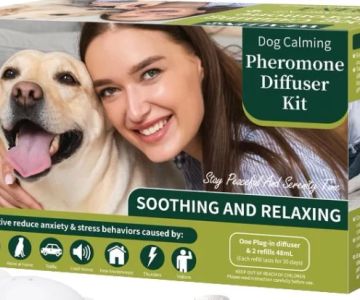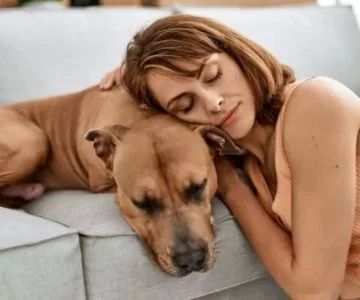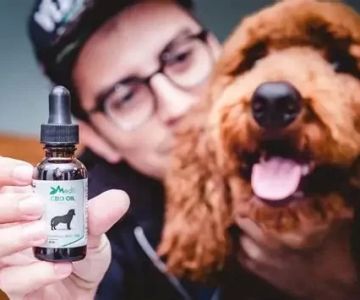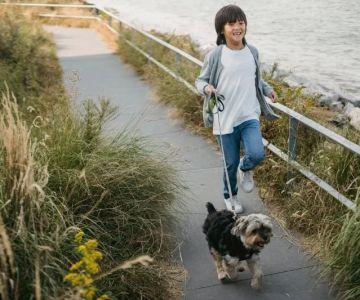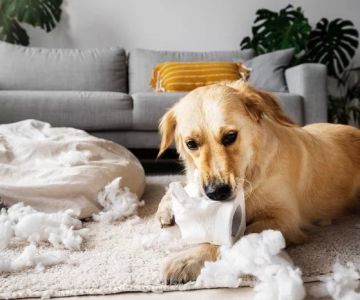Understanding Anxiety in Elderly Pets
As pets age, their physical and mental health needs evolve. One of the common, yet often overlooked, issues among elderly pets is anxiety. Older pets are more likely to experience stress due to changes in their environment, health issues, and a variety of other factors. As a responsible pet owner, it’s essential to recognize the signs of anxiety and know how to provide the support they need. This article will explore the causes, symptoms, and treatment options for anxiety in elderly pets, with insights and advice from experts.
1. The Causes of Anxiety in Senior Pets
1.1 Physical Discomfort and Health Problems
As pets age, they often develop health problems like arthritis, hearing loss, or poor vision, all of which can contribute to anxiety. For example, a cat with arthritis might find it painful to jump onto a couch or move around the house, which can lead to feelings of frustration and stress. Similarly, dogs with limited sight or hearing may become disoriented, which could make them feel unsafe or insecure.
1.2 Cognitive Dysfunction Syndrome (CDS)
Another factor contributing to anxiety in senior pets is Cognitive Dysfunction Syndrome (CDS), which is similar to dementia in humans. Pets with CDS can experience memory loss, confusion, and changes in their behavior. They may wander aimlessly, vocalize excessively, or forget house training. This cognitive decline can create feelings of anxiety and unease, as your pet may no longer recognize familiar environments or family members.
1.3 Changes in Routine or Environment
Elderly pets are creatures of habit. Significant changes in their routine or environment, such as a move to a new home, the arrival of a new pet or family member, or even the absence of a familiar person, can trigger anxiety. These changes may cause your pet to feel insecure, leading to behavioral issues like increased vocalization, pacing, or destructive behavior.
1.4 Separation Anxiety
Older pets are also prone to separation anxiety, particularly if they've grown very attached to their owners over the years. If your pet experiences loneliness or distress when you're away, they may exhibit signs such as drooling, pacing, or urinating inside the house. This is a common issue in senior pets that have been through major life changes or have suffered the loss of a companion.
2. Recognizing the Symptoms of Anxiety in Elderly Pets
2.1 Behavioral Signs
Identifying anxiety in elderly pets requires keen observation. Common signs of anxiety include:
- Excessive barking, whining, or meowing
- Pacing, restlessness, or agitation
- Destructive behavior such as chewing, scratching, or digging
- Excessive grooming or licking
- Changes in eating or sleeping habits
2.2 Physical Symptoms
Anxious pets may also show physical signs of distress, including:
- Shaking or trembling
- Drooling or panting excessively
- Changes in posture, such as crouching or hiding
- Digestive issues such as vomiting or diarrhea
2.3 Social Behavior Changes
Senior pets experiencing anxiety may become withdrawn or overly clingy. They may avoid social interaction or become fearful of people or other animals they once enjoyed being around. This can often be mistaken for a general decline in social interest, but it is important to recognize that anxiety might be the underlying cause.
3. How to Treat Anxiety in Senior Pets
3.1 Create a Calm and Predictable Environment
One of the best ways to help manage anxiety in elderly pets is to provide a calm, predictable environment. Senior pets benefit from a stable routine, as they feel more secure when they know what to expect. Try to maintain consistent feeding times, daily walks, and quiet time. Ensure their sleeping area is comfortable, quiet, and free from disruptions.
3.2 Regular Vet Visits and Health Monitoring
Before addressing anxiety, it is crucial to ensure that your pet is free from any underlying medical conditions. A visit to your veterinarian, such as those at Hidden Brook Veterinary, can help rule out conditions like arthritis, vision or hearing impairments, or dental disease, which could be contributing to their anxiety. Regular check-ups allow you to stay on top of your pet’s health and provide them with necessary treatments.
3.3 Behavior Modification and Training
For pets suffering from separation anxiety or fear of specific situations, behavior modification techniques can be highly effective. Gradual desensitization and counter-conditioning are methods used to change your pet’s response to anxiety-provoking stimuli. For example, you can help them get used to being alone for short periods, slowly increasing the time you’re away. Positive reinforcement can also be used to reward calm behavior.
3.4 Medications and Supplements
In some cases, medications or supplements may be needed to help manage anxiety in senior pets. Anti-anxiety medications prescribed by your vet can provide temporary relief for severe anxiety, while calming supplements (such as those containing L-theanine or valerian root) may be beneficial for mild cases. Always consult your vet before giving your pet any medication or supplement to ensure safety.
3.5 Enrichment and Mental Stimulation
Mental stimulation is essential for senior pets, as it can help improve their cognitive function and reduce anxiety. Provide interactive toys, puzzle feeders, or even simple games like hide-and-seek to keep their mind engaged. A combination of physical exercise and mental enrichment can do wonders for your pet’s overall well-being.
4. Case Study: The Transformation of Bella the Senior Cat
Bella, a 14-year-old cat, began showing signs of anxiety after her owner, Sarah, moved into a new home. Bella’s anxiety manifested in excessive meowing, hiding, and not eating her food. After a consultation with Hidden Brook Veterinary, it was discovered that Bella had developed arthritis, which made her uncomfortable in her new environment. With a combination of pain management and gradual behavioral adjustments, Bella began to calm down and regain her normal behavior. Sarah’s experience highlights the importance of understanding how health issues can contribute to anxiety in senior pets and the value of seeking professional help.
5. Tips for Managing Anxiety in Elderly Pets
5.1 Provide Comforting Items
Adding familiar items, like your pet’s favorite blanket, toy, or bedding, can provide comfort during stressful times. The smell and texture of these items offer a sense of security, which can help reduce anxiety.
5.2 Use Calming Products
There are several calming products available for pets, including pheromone diffusers, sprays, and calming collars. These products mimic natural pheromones and have been shown to reduce anxiety in both dogs and cats. Consider consulting with your vet for recommendations tailored to your pet’s needs.
5.3 Stick to a Routine
Senior pets thrive on routine, and maintaining a consistent schedule can help reduce feelings of uncertainty. By feeding, walking, and playing with your pet at the same time each day, you can provide them with a sense of structure and security.
If you’re concerned about your pet’s anxiety, it’s important to consult with a veterinarian who can assess the underlying causes and provide treatment options. At Hidden Brook Veterinary, we understand the unique needs of senior pets and are here to offer expert advice and care for your furry companions.





